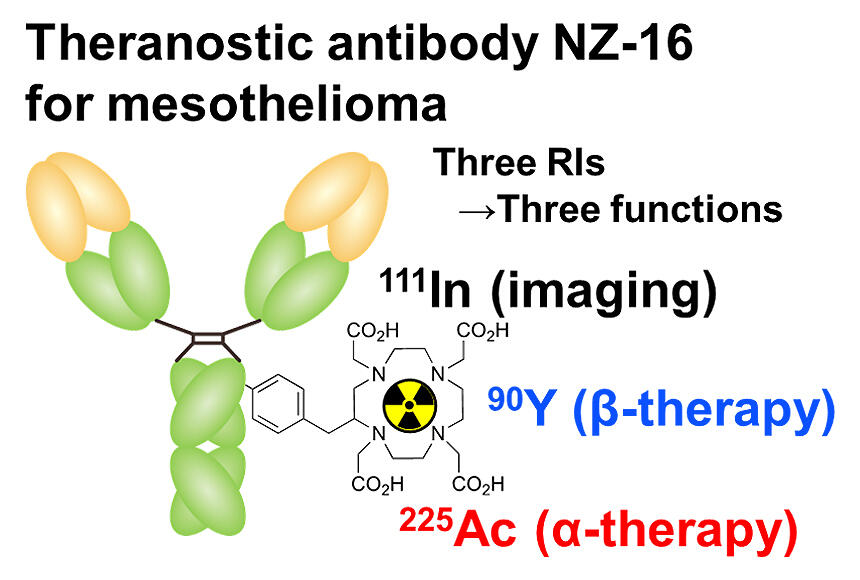In collaboration with Professor Yukinari Kato and Associate Professor Mika K. Kaneko of the Graduate School of Medicine, Tohoku University, a research team from the National Institutes for Quantum Science and Technology (QST)' s Quantum Life and Medical Science Directorate, Institute for Quantum Medical Science, Department of Molecular Imaging and Theranostics, consisting of Senior Researcher Hitomi Sudo, group leader Atsushi B. Tsuji, and Director Tatsuya Higashi, have succeeded in developing a therapeutic drug candidate for malignant mesothelioma (a type of cancer)--based on nuclides that emit alpha (α) rays--and conducted animal experiments to verify its anticancer effects.
Mesothelioma is a malignant tumor that develops from the mesothelium in the pleura, peritoneum, and other similar organ-lining membranes, with 80-85% originating from the pleura. Most of the earlier cases of mesothelioma were due to exposure to asbestos, which became a major social problem after the media publication of the scandal known as the 2005 "Kubota shock". Imports and usage of asbestos peaked in the 1970s and 1980s in Japan, and in principle, the use of all asbestos was banned in 2004. However, the incubation period from asbestos exposure to disease onset is 25 to 50 years. The peak incidence of malignant mesothelioma is estimated to be approximately 30 years, and the number of people affected is estimated to reach 3,000 per year.
The research team at QST has succeeded in efficiently producing the radio nuclide actinium-225 (225Ac), which emits α-rays. These rays have a short radiation distance of several cells and therefore a high ability to kill cells to which they are exposed. 225Ac is a radioisotope that has in recent years been used as a targeted radionuclide therapy in patients with prostate cancer, where it acts by targeting the prostate-specific membrane antigen (PSMA). If 225Ac could be delivered exclusively to mesothelioma cells, then the short-range α-rays would be able to kill cancer cells efficiently without damaging the surrounding normal cells.
With this as a background, the research team developed 225Ac-labeled NZ-16 as a drug candidate for α-ray-based targeted radionuclide therapy. NZ-16 is an antibody that binds to a protein called podoplanin, which is abundant on the cell surface of mesothelioma cells. Podoplanin is a promising therapeutic target because it is a protein that is abundantly expressed, even in the highly malignant sarcoma type of mesothelioma. The researchers confirmed that a single administration of 225Ac-labeled NZ-16 to model mice with mesothelioma was effective in reducing the tumor size and nearly eradicating the tumors. They also confirmed that it prolonged the survival time of the animals. Furthermore, no side effects of weight loss or pathological findings were observed. Finally, the researchers compared the antitumor effect of yttrium-90 (90Y)-labeled NZ-16 with that of 225Ac-labeled NZ-16. The radioisotope 90Y emits beta (β) rays, which have the same cancer cell-killing ability as α-rays. It was revealed that 225Ac-labeled NZ-16 had a higher tumor reducing effect than 90Y-labeled NZ-16.
According to Dr. Tsuji, "The prognosis of malignant mesothelioma is poor, and new treatments are sorely needed. However, because of the small number of patients, we cannot hope for corporate-led development. In an effort to someday achieve clinical applications, we are currently formulating a non-clinical trial implementation plan. We aim to start clinical trials in three years. However, securing funds is the biggest issue, and we are expecting support from companies and other funding sources."

(Provided by QST)
This article has been translated by JST with permission from The Science News Ltd.(https://sci-news.co.jp/). Unauthorized reproduction of the article and photographs is prohibited.




